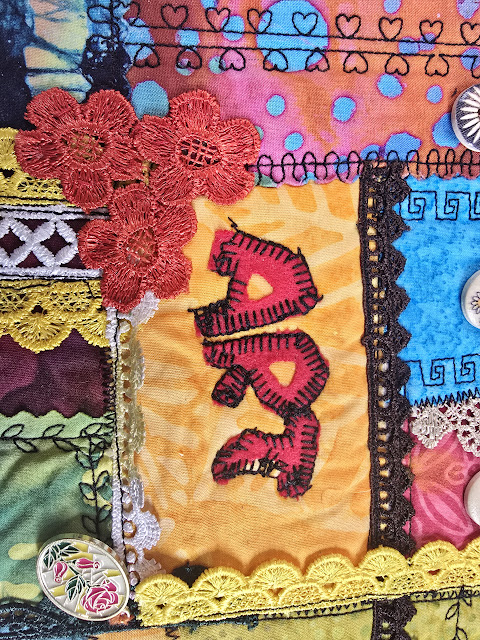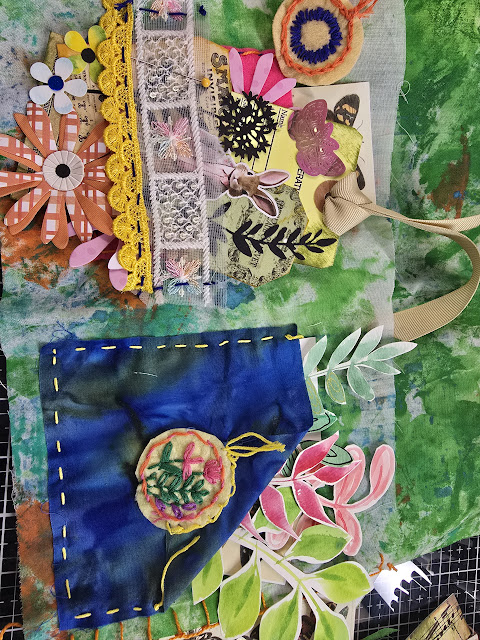How do mixed media artists or any medium artists learn from the famous artist? What are the simple ways to learn
Mixed media artists—or artists working in any medium—can
learn from famous artists by studying their techniques, experimenting with
materials, and adapting creative processes to fit their own style. Here are
simple, practical ways to learn from the masters:
Simple Ways to Learn from Famous Artists
1. Study
Their Techniques and Materials
·
Research
how artists like Picasso, Braque, and Rauschenberg pioneered mixed media by
combining traditional and unconventional materials (e.g., newspaper, fabric,
found objects) in their art[1][2].
·
Observe
how artists use layering, texture, and collage to add depth and meaning to
their work. Try incorporating similar materials—such as paper, sand, or
textiles—into your own projects[3][2].
2. Create
Master Studies
·
Select a
piece by a famous artist and attempt to recreate it, focusing on the
composition, color choices, and use of materials. This helps you understand
their decision-making process and develop your technical skills[4].
·
Start
with quick sketches to capture the overall structure, then move to more
detailed studies, experimenting with the same or similar media[4].
3.
Experiment with New Techniques
·
Use
tutorials and online resources to try out innovative mixed media
techniques—such as adding rust effects, using sawdust for texture, or combining
acrylics with gold ink[3].
·
Challenge
yourself to use materials you’ve never tried before, pushing your creative
boundaries and discovering new possibilities[4][2].
4.
Analyze and Reflect
·
As you
study or copy masterworks, ask yourself questions: Why did the artist choose
these materials? How do the layers and textures contribute to the overall
effect? Annotate your studies with notes and observations for future reference[4].
·
Compare
your results with the original, noting what worked well and what you might do
differently next time.
5. Engage
in Hands-on Projects
·
Try
simple, accessible projects inspired by famous artists—such as collages using
recycled magazines (inspired by Clare Celeste Borsch) or textured paintings on
wallpaper samples (like David Wightman)[5].
·
Work
individually or collaboratively to explore different approaches and expand your
creative toolkit.
6. Learn
About the Artists’ Lives and Context
·
Read
books, watch documentaries, or complete artist study units to understand the
cultural and historical influences that shaped each artist’s work. This context
can inspire your own creative ideas and help you see the broader possibilities
within your medium[6].
Key Takeaways
·
Start by
observing and analyzing masterworks, then experiment with their techniques
using your own materials.
·
Combine
quick studies with more detailed projects to build both skill and confidence.
·
Reflect
on your process and results, and don’t hesitate to try new materials or
methods.
·
Remember,
the essence of mixed media—and art in general—is experimentation and personal
expression[1][2].
By actively studying, practicing, and reflecting on the work
of famous artists, you can expand your skills, discover new techniques, and
gradually develop a unique artistic voice, no matter what medium you use.
⁂
![]()
1.
https://brushedrestorations.com/mixed-media-art-guide/
2.
https://www.rmcad.edu/blog/exploring-mixed-media-combining-materials-and-techniques/
3.
https://www.youtube.com/watch?v=1jHv7OC4zYQ
4.
https://www.haydnsymons.com/blog/how-to-create-master-studies/
5.
https://theartofeducation.edu/2019/01/10-mixed-media-artists-to-inspire-you-and-your-students/
6.
https://dailyskillbuilding.com/artist-study/
Simple Ways for Mixed Media or Any Medium Artist to Learn
from Famous Artists
Study and
Copy Masterworks
·
Copying
the works of great artists is a time-tested method for learning. This practice
helps you understand their techniques, composition, and use of color. You can
do this by working from postcards, photocopies, or art books if you can't
access museums directly[1].
·
Many art
teachers and institutions recommend this approach, as it allows you to
internalize the methods of masters like Corot, da Vinci, or Van Gogh[1][2].
Try
Famous Techniques
·
Research
and practice specific techniques used by renowned artists. For example, you can
experiment with Rubens’ serpentine contours, da Vinci’s line transfer methods,
or Vermeer’s layering for realistic effects[2][3][4].
·
Online
tutorials and video demonstrations are available for step-by-step recreations
of famous artworks, making it accessible even for beginners[5][3].
Explore
Mixed Media Methods
·
Start
with basic mixed media techniques like layering, collage, and combining
familiar materials (e.g., acrylics, watercolors, ink, paper)[6][7][8].
·
Plan your
design, prepare your surface (canvas or mixed media paper), and experiment with
adding texture and details using different tools and mediums[8].
·
Studying
the works and biographies of famous mixed media artists can also inspire and
inform your own creative journey[6].
Practice
Regularly and Experiment
·
Consistent
practice and experimentation are key. Try different techniques, materials, and
styles to discover what resonates with you[9].
·
Don’t be
afraid to blend methods from various artists or art movements—mixed media is
about creativity and breaking boundaries[6][7].
How to Write a Simple Blog Post About Your Artistic Learning
1. Choose
Your Focus
·
Decide
whether your post will be about a specific artist, a technique you learned, or
your experience recreating a famous work.
2.
Structure Your Blog Post
·
Introduction:
Briefly introduce the topic and why you chose it.
·
Main
Content: Share what you learned from the artist or technique. Include
step-by-step details if you recreated a work or tried a new method.
·
Personal
Reflection: Describe your experience—challenges, surprises, and what you
enjoyed.
·
Conclusion:
Summarize key takeaways and encourage readers to try it themselves.
3. Use
Visuals
·
Add
photos of your process, your finished artwork, and any reference images from
famous artists (if allowed).
4. Keep
It Simple and Engaging
·
Write in
clear, friendly language.
·
Use
bullet points or numbered steps for easy reading.
·
Share
honest thoughts about what worked and what didn’t.
5.
Encourage Interaction
·
Ask
readers to share their own experiences or questions in the comments.
![]()
Example
Blog Post Outline:
Title: Learning
from Van Gogh: My Mixed Media Experiment
Introduction:
I’ve always admired Van Gogh’s bold colors and expressive brushwork. This week,
I decided to learn from the master by recreating a small section of “Starry
Night” using mixed media.
What I Learned:
My Process:
Reflection:
It was challenging to capture Van Gogh’s energy, but layering materials helped
me get closer to his style. I learned a lot about color mixing and texture.
Conclusion:
If you’re looking for inspiration, try learning from your favorite artist. It’s
a fun way to grow your skills and discover new techniques.
![]()
By studying masters, experimenting with their techniques,
and sharing your journey in a simple blog post, you can both improve as an
artist and inspire others to do the same[1][2][6][8].
⁂
![]()
1.
https://www.artistsnetwork.com/art-techniques/private-lessons-from-the-masters/
2.
https://www.artistsnetwork.com/art-inspiration/7-painting-techniques-youll-want-try/
3.
https://www.youtube.com/watch?v=GZWIipC0aDU
4.
https://www.artsy.net/article/artsy-editorial-painting-techniques-5-famous-artists-botticelli-vermeer
5.
https://www.youtube.com/playlist?list=PL-PoO0zgd6rIbaYIRXBm7hJdzAJf44VNT
6.
https://brushedrestorations.com/mixed-media-art-guide/
7.
https://www.thesocialeaselonlinepaintstudio.com/mixed-media-art-for-beginners/
8.
https://princetonbrush.com/blog/tips-for-creating-mixed-media-art-a-guide-for-beginners/
9.
https://www.milanartinstitute.com/blog/painting-techniques















